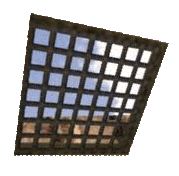| Another School Shooting [message #78659] |
Sat, 14 December 2013 10:33  |
 PageantDirector
PageantDirector
Messages: 15
Registered: December 2013
Location: Missouri
|
Chancellor |
|
|
On the eve of the one year anniversary of the Sandy Hook school shooting there was yet another school shooting. This one was just a few miles away from Columbine. What do you think causes these terrible tragedies? What can make a person decide to kill another, much less shoot up a school full of children?
I don't think it has anything to do with violence on television or video games. I do think that these kids are troubled and somehow it is getting missed by those who are supposed to be helping them. How can we (as parents and teachers) help our kids so that these kinds of things don't happen?
|
|
|
|
|
|
|
|
| Re: Another School Shooting [message #78690 is a reply to message #78686] |
Wed, 18 December 2013 10:54  |
 Azuri
Azuri
Messages: 315
Registered: November 2012
|
Grand Master |
|
|
| PageantDirector wrote on Tue, 17 December 2013 23:16 | I'm not sure if that is entirely accurate. I know that violence is more graphic now but if you think back to watching Saturday morning cartoons how often did Wile E. Coyote try to kill the road runner? How often did Elmer Fudd try to kill Bugs Bunny? What was Tom's goal when he was chasing Jerry? Violence on television isn't something that is new to society. It has been around almost since the beginning of television.
I think perhaps a better way to approach it, if you have that view point, is to minimize the GRAPHIC violence that our children see. At the same time though, shouldn't parents be emphasizing to children that these kinds of behaviors are not appropriate?
|
This is why, in my opinion, kids weren't nearly as violent back in the day. The Road Runner for example wasn't graphic, he was never actually killed and the kind of animation back then left no doubt that it was a cartoon. Now, "cartoons" are much more realistic looking, weapons are being used and the images can be very graphic. It's all much more realistic, blurring the lines between fantasy and reality.
|
|
|
|











